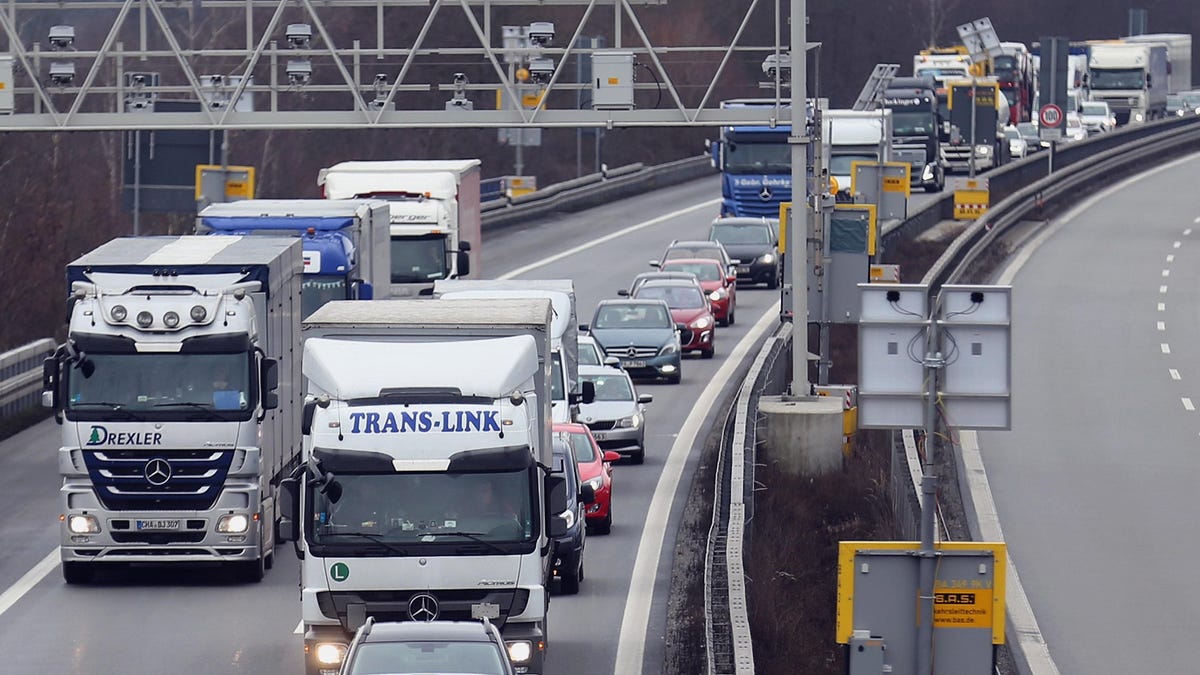No, Europe Didn't Just Force Automakers to Install "Speed Limiters"

Photo: Johannes Simon (Getty Images)
Three years ago, the European Commission came together to combat speeding through software in new cars. The Commission signed a law that just went into effect earlier this month: Every newly-introduced vehicle delivered in the E.U. must have “Intelligent Speed Assistance,”and all new vehicles on sale will need it by July 2024. But no matter what comes to mind when you think “mandatory speed limiter,” know this: ISA won’t actually limit how fast you can drive your European-market car.
So what does ISA do? If you’re trying to speed, ISA functions like the pop-up window that make you rethink your online impulse purchases. It’s a warning message, simple as that, the car merely asking, “do you really want to do that?”
Photo: Sean Gallup (Getty Images)
The European Commission makes it explicitly clear that the ISA system will never override the will of the human behind the wheel. As the Commission’s page about ISA explains, “The ISA system is required to work with the driver and not to restrict his/her possibility to act in any moment during driving. The driver is always in control and can easily override the ISA system.” Don’t worry — as has always been the case, the only things standing between you and your Autobahn VMax dreams are local laws, your car’s capabilities, and your own supply of courage.
Put simply, ISA isn’t designed to stop you from speeding, but merely to dissuade you. The “Intelligent” part refers to how the system uses GPS and visual data, determining the speed limit where you’re driving based on posted signs or a database of local speed limits. In other words, the car is aware of the speed limit where it’s currently driving — a feature that first became available on high-end cars several years ago, and is continually trickling down to mass-market affordable models.
G/O Media may get a commission
Photo: Sean Gallup (Getty Images)
If the car determines that it’s exceeding the current speed limit, the EU regulation allows it to respond in one of four ways: Audible warnings, haptic warnings, increased resistance on the accelerator pedal, or reduced engine power.
Every one of these notifications is designed to be easily dismissed or ignored. According to the E.U. law, the audible and haptic warnings must be “as short as possible in duration to avoid potential annoyance of the driver.” So, no, you won’t be stuck with an incessant Japanese-style 1980s speed chime or a driver’s seat that constantly vibrates over a certain speed. (That last one might make for a good cost-extra option, though.)
Photo: Patrik Stollarz (Getty Images)
As for the car pushing back on the accelerator pedal, the European Commission specifically notes that this feedback must be easy to override, simply by adding force to the pedal. The final option, limiting engine power, is the most disconcerting of the bunch, but — once again — the law still requires that the driver can overrule the ISA by pushing the accelerator harder.
And that gets us to our final point: Per the E.U. law, ISA must be fully defeatable, “for as long as necessary” — meaning if you turn it off, it stays off. As with just about every defeatable modern safety device (traction control, stability control, passenger airbags, etc.), the system is designed to activate every time you start the car, but the E.U. law notes that “the driver should always be made aware of whether the system is on or off.”
While ISA is certainly an added level of driver interference, it’s far from the apocalyptic, totalitarian device implied by the phrase “mandatory speed limiter.” Even if they never turn the system off, EU drivers will still be able to pass slower vehicles, accelerate away from dangerous situations, and indulge in “unrestricted” sections of the Autobahn. Some of them might just have to push a button or ignore a warning chime on the way.



